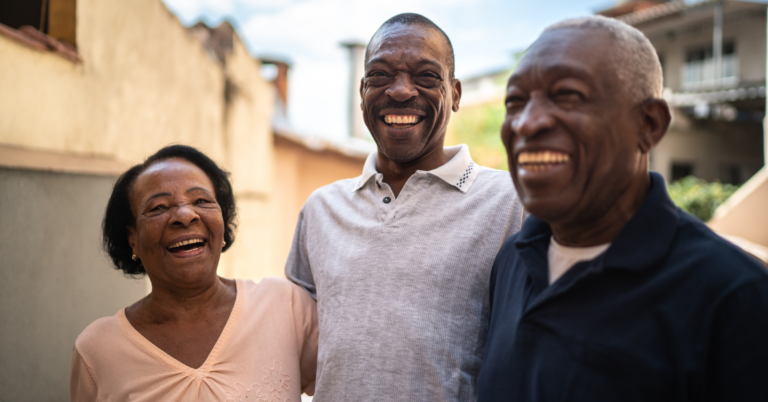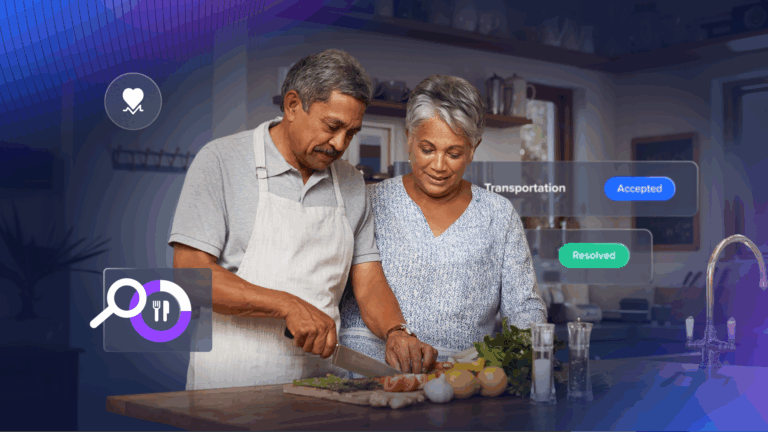
The Vicious Cycle of Poverty and Behavioral Health
Behavioral Health Series #2
In America today, 44.7 million adults live with a mental illness, 20.1 million adults and teens have a substance use disorder1, and 8.2 million people struggle with both2. While these behavioral health problems can affect people regardless of race, religion, location, or income, the most vulnerable population is those living at the poverty level. But which problem is at the heart of the issue? Does poverty cause behavior health problems or vice versa? Understanding the vicious cycle of poverty and behavioral health issues can help us develop programs and interventions that can address the root causes and heal those in need.
How poverty contributes to behavioral health problems
According to the U.S. Census Bureau, 43.1 million Americans live in poverty.3 Of those, 18.5 million live in deep poverty3, with a household income of less than half the poverty threshold, which is $12,486/year for a single individual and $24,339/year for a family of four with two children.4 With little financial resources available, it is easy to see how, if faced with substance use or mental illness, this population would have a hard time getting the treatment they need.
In fact, this population may actually be more susceptible to addiction than other populations. According to the Centers for Disease Control and Prevention (CDC) people on Medicaid and other people with low incomes are at a higher risk for prescription drug overdose than others. That may be because people on Medicaid are prescribed opioids at higher doses and longer durations (thus increasing their risk of addiction) than those in higher income brackets.5 Or it may be that, because they struggle with relationships, have become isolated from strong family and social ties, and turn to drugs or alcohol for relief.
Whether they need help with substance use or mental illness, this population may struggle to afford a car or other transportation to get to a doctor or treatment facility. Even with federal subsidies, they may not be able to pay for insurance that could cover the treatment or medication they need. Or they may simply not be able to afford to take time off from a job, pay for treatment or buy medication, even if they have insurance.
Research shows that as income increases, the percentage of those with serious mental health problems decreases. While 8.7% of adults with income below the poverty line have serious psychological distress, only 1.2% of those with income at or above 400% of the poverty line do.6 This leads us to believe that having greater income can lead to living healthier lives and experiencing less behavioral health issues.
Then, the question becomes how can we help individuals living in poverty to access treatment, increase social supports and build stronger more equitable communities?
How behavioral health issues exacerbate the poverty problem
Those who struggle with depression, anxiety, bipolar disorder or other mental illness, or are using drugs or alcohol, will find it difficult to work effectively and consistently and may not be able to hold a steady job. Due to their illness or disorder, they may also lose or cut ties with family and friends who might be able to help them financially or otherwise. With this social isolation often comes increased substance abuse or mental health problems.
Our question here is how can we effectively treat those who are struggling with mental illness or substance abuse, so that they can keep their jobs and support themselves and their families financially?
Wave of new programs and initiatives to support behavioral health care
The good news is that we are starting to see a wave of new innovative programs at a federal and at a local level. Mental illness and substance use impact all communities and we know that it will take the community to help address this problem.
Stay tuned for our next post highlighting some impactful and innovative programs that are working to address behavioral health challenges across the country.In the mean-time if you have not taken a look at our behavioral health infographic you can find it here.
To learn more about how Unite Us can support your community address behavioral health challenges you can fill out your information below and a member of the Unite Us team will reach out!
1 “2016 National Survey on Drug Use and Health”, Substance Abuse and Mental Health Services Administration, as found on the National Institute of Mental Illness, www.nimh.hih.gov/health/statistics/mental-illness.shtml
2 2016 NSDUH REPORT: America’s Behavioral Health Changes & Challenges, www.samhsa.gov/data
3 “What is the current poverty rate in the United States?”, Center for Poverty Research, University of California, Davis, https://poverty.ucdavis.edu/faq/what-current-poverty-rate-united-states
4 “What are the poverty thresholds today?”, Center for Poverty Research, University of California, Davis, https://poverty.ucdavis.edu/faq/what-are-poverty-thresholds-today
5 “Addressing the opioid crisis means confronting socioeconomic disparities,” National Institute on Drug Abuse, October 25, 2017
6 “Serious Psychological Distress Among Adults: United States, 2009-2013, NCHS Data Brief, No. 203, May 20151



